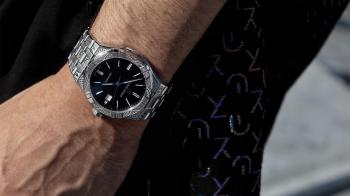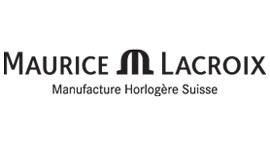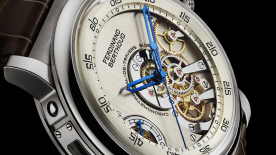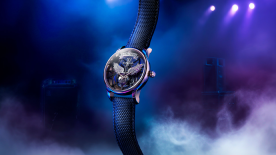Maurice Lacroix is currently successful like very few other watchmaking brands, especially since they're not playing the wildly creative, independant, complication card, nor are they a behemoth reaping a success they would have been sowing for forty years. Its team is small, but since the brand is too, there's nothing there. Except it's a bigger brand than you think, it's been growing non stop for something like five years and it's barely taken a hit during the 2019/20 pandemic havoc. It's a light, agile brand, that heavily relies on subcontracting: they do not manufacture components but assemble their in-house movements as well as all their watches. And they do their own development in-house. Based on that, Maurice Lacroix has accomplished four essential things the entire industry is striving to achieve.
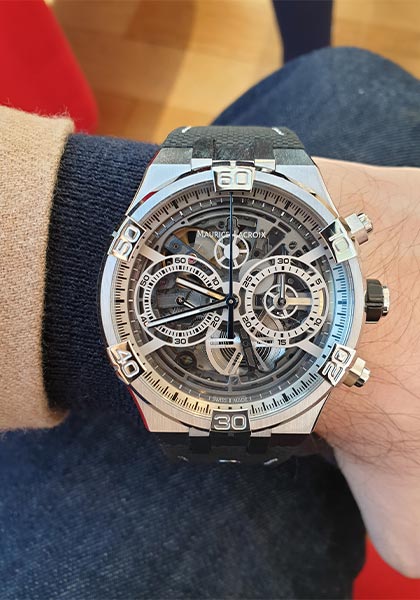
The first one is to have created a flagship watch. A best selling model that spawns numerous variations and sub-collections. It's called Aikon Automatic and it's an ironic nod to all the so-called, self-proclaimed icons out there. It's a steel, integrated bracelet timepiece with Clou de Paris dial and a matte bezel with six arms. It's cool, its a comfortable wear and it's really not expensive. But the key takeaway here is that it basically saved the brand. Seven years ago, it had become small, fragile and without a spearheading model. Between its launch in 2019 and the next year, it gained enormous traction and turned things around completely. For men, women, both, and from 35 to 43 mm. With threehanders, chronographs or GMT movements. Fitted with black, blue, grey, pink, green, champagne, camo or mother-of-pearl dials. In steel, titanium, black DLC, camo again, bronze and even fully engraved cases. It's got a rugged sub-collection, Aikon Automatic Venturer, complications that include the Master Grand Date and Mercury and several skeleton versions. It's even got a quartz version, the first one to have been released actually and whose more rounded lines and edges are a reminder of what Aikon owes to the model that's inspired the whole thing, the brand's 1980's best-seller called Calypso.

The second ingredient of their success is guerilla marketing. Maurice Lacroix doesn't do large, institutional, massive campaigns. They do frequent, numerous, short bursts of digital launches all year long, among which three or four are limited series created in partnership with their vast and eclectic stable of brand ambassadors. They are mostly local, niche, with a devoted and active following audience and a strong link with the product. Maurice Lacroix even shares the proceed of the sales with those who actively promote them. As a result, these limited editions sell fast, too fast for some people's taste, which in turn creates a positive frustration with those who missed it. Desirabilty ensues, gradually.
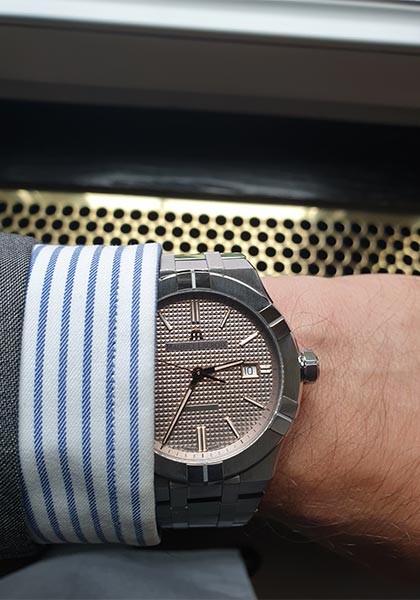
Third successful achievement : the online business. Maurice Lacroix's watches sold online (through their own e-store or their retailers') generated 30% ot their revenue for the year 2020. That is a staggering figure. It needs to be said again and again : new watches do not sell well online. Those who say otherwise are straight out lying (yes, they do that) and actually are happy with much smaller percentage points that cost them an arm and a leg. Maurice Lacroix has gone full digital three years ago, leaving only 5% of their budget to printed media. They coordinate that presence with the aforementioned launches, but all of that didn't require massive investments, or the recruitment of expensive, expert staff. That kow-how is largely managed in-house. As a result, the brand never stopped addressing its native audience, males over 30 in German-speaking countries, and gained another one in the process : a younger crowd of millenials and digital natives, women, well beyond Europe. Which is what everyone in this industry is after.
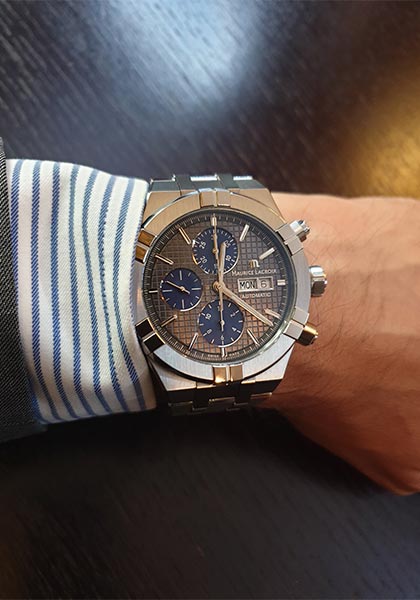
Behind all of these business factors lies whay is probably their biggest asset, the one that closes the sale : their price to quality ratio. There are lots of brands out there claiming to give you more for your money. But Maurice Lacroix actually hits the spot because they manage to be as attractive and affordable as brands carrying volumes five to thirty times higher.
A skeleton chronograph for 6950 € ? A steel, integrated bracelet, automatic three-hander for 1690 € ? A 300-meters automatic with a bronze case and two bracelets for 2590 € ? An entirely engraved piece (laser-engraved, sure, but still) for 1990 € ? All of which features excellent finishings (not on the movements, most of which are generic). Maurice Lacroix is not expensive but nothing about them is cheap either.
So what do we have here : a brand that was about to be pulled the plug on in the 2010s is now a posterchild for agility, efficiency and digital acumen, based on a flagship model that keeps on giving and growing, at a great price point. Not bad Maurice.
